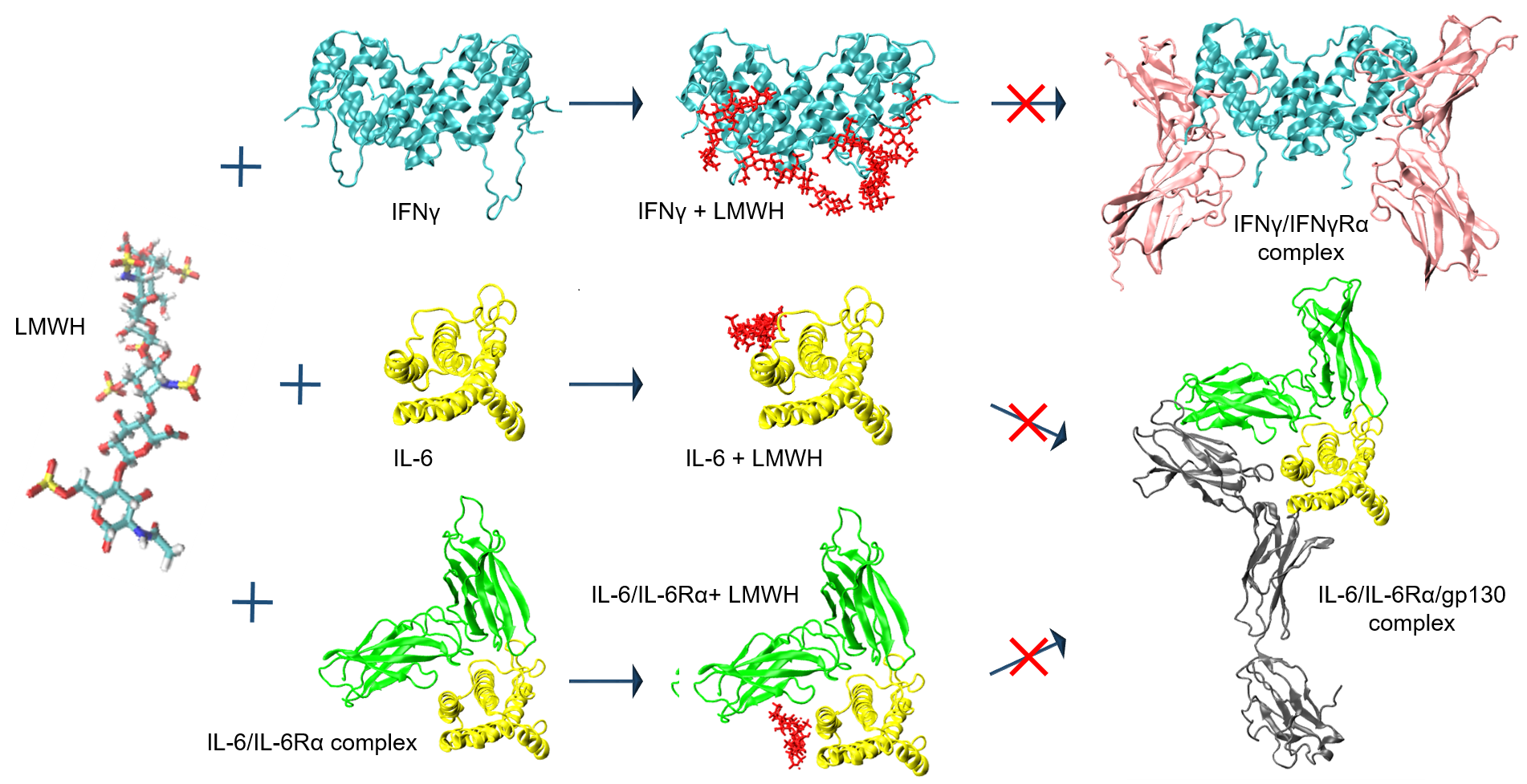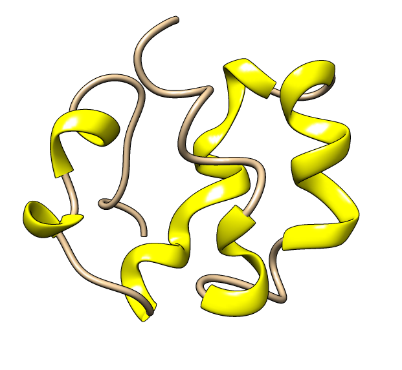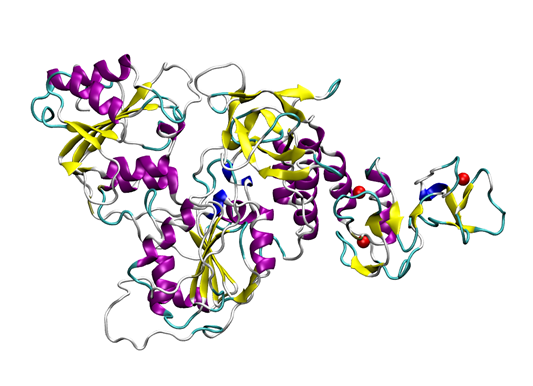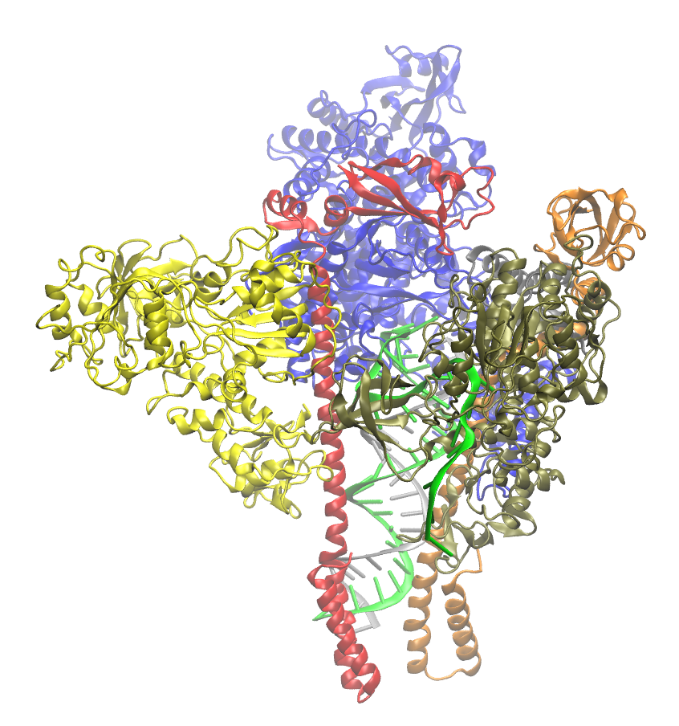Research Project KP-06-DK1/5/2021
29 March 2021 - 29 March 2023

Lorem ipsum dolor sit amet ipsum dolor sit amet ipsum dolor sit amet.
The severe phase of COVID-19 is characterised by a high level of expression of interferon-stimulated genes with proinflammatory activities, showing the immunopathological role of IFNγ response. Among the elevated cytokines, IFNγ and the IFNγ-stimulated chemokines are especially prominent already in the very early fever days. Downregulation of the activity of two key cytokines, IFNγ and IL-6, appears as a promising strategy towards the reduction or even reverse development of the cytokine storm.
The mechanism of heparin binding to IFNγ and IL-6 and the resulting inhibition of their activity were studied by means of extensive molecular-dynamics simulations. The effect of low-molecular-weight heparin (LMWH) on IFNγ signalling inside stimulated WISH cells was investigated by measuring its antiproliferative activity and the translocation of phosphorylated STAT1 in the nucleus.
We find that LMWH binds with high affinity to IFNγ and is able to fully inhibit the interaction with its cellular receptor. It also influences the biological activity of IL-6 by binding to either IL-6 or IL-6/IL-6Rα thus preventing the formation of the IL-6/IL-6Rα/gp130 signalling complex. These findings shed light on the molecular mechanism of the anti-inflammatory action of LMWH and underpin its ability to influence favourably conditions characterised by overexpression of these two cytokines. Such conditions are associated with autoimmune diseases, but also with inflammatory processes, in particular with COVID-19. Our results put forward heparin as a promising means for prevention and suppression of severe CRS and encourage further investigations on its applicability as an anti-inflammatory agent.




Copyright © 2021 — All Rights Reserved — The SARSIMM Project